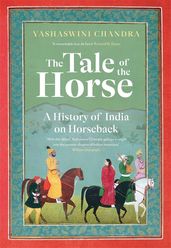The Tale of the Horse: A History of India on Horseback
Synopsis
The horse is etched on the Indian landscape, and to view the subcontinent’s past through the prism of the horse is to be swept up in its power and grace. Horses are a thread that connects Indian history, mythology, art, literature, folklore and popular belief.
In this inspired and singularly erudite debut, Yashaswini Chandra takes us on the trail of the horse into and within India. What follows is a surprising and exhilarating journey, covering caravan-trade routes originating in Central Asia and Tibet, sea routes from the Middle East, and the dominions of different sultans and Mughal emperors, the south Indian kingdoms as well as the Rajput horse-warrior states. She outlines the political symbolism of the horse, its vital function in social life, religion, sport and war, its role in shaping economies and forging crucial human bonds. We learn of the emergence of local breeds such as the Kathiawari and the Marwari, the Zanskari and the Manipuri. We encounter fabulous horsewomen too, Chand Bibi, Maratha princesses and women polo players among them. We meet grooms, farriers, breeders, traders and bandits. The highlight of course are the magnificent examples of the horse itself – Rana Pratap’s legendary Chetak, Ranjit Singh’s much- contested Laili, Pabuji’s cherished black mare and those horses captured in paintings and equestrian portraits. This glorious age of the horse would meet its agonized decline with the onset of colonial rule and mechanization.
In the end, what is most remarkable is that the history of the horse in India, mirroring that of its human inhabitants, is a tale of migration and permanent intermingling. The horse is thus an exceptional and fitting vantage from which to appreciate the history of the land, influenced as it was by this most instrumental of animals.
